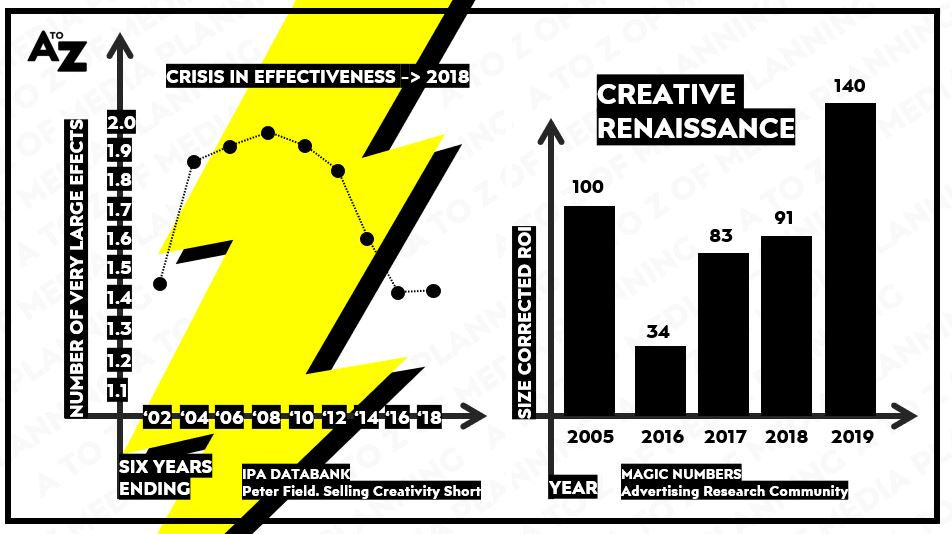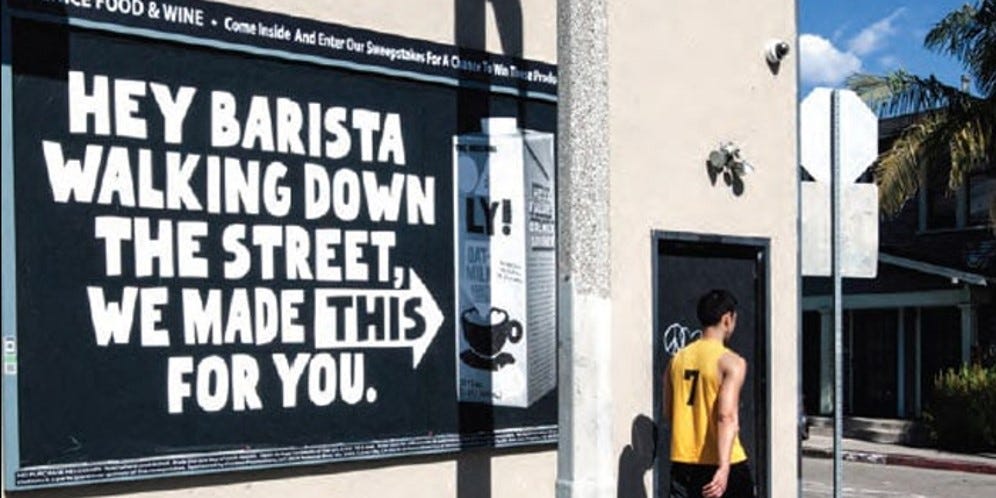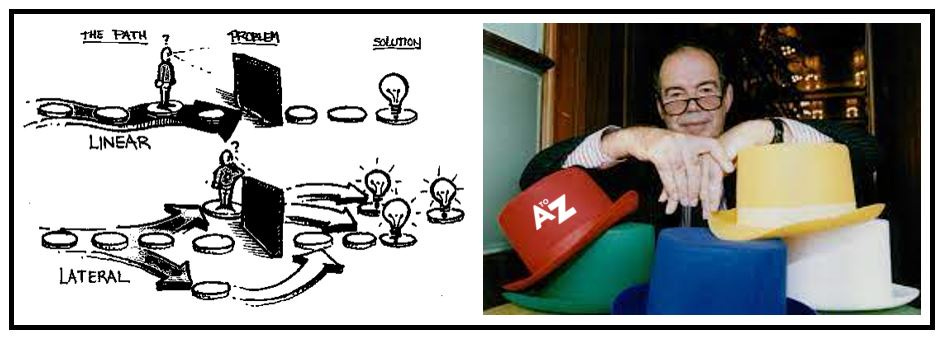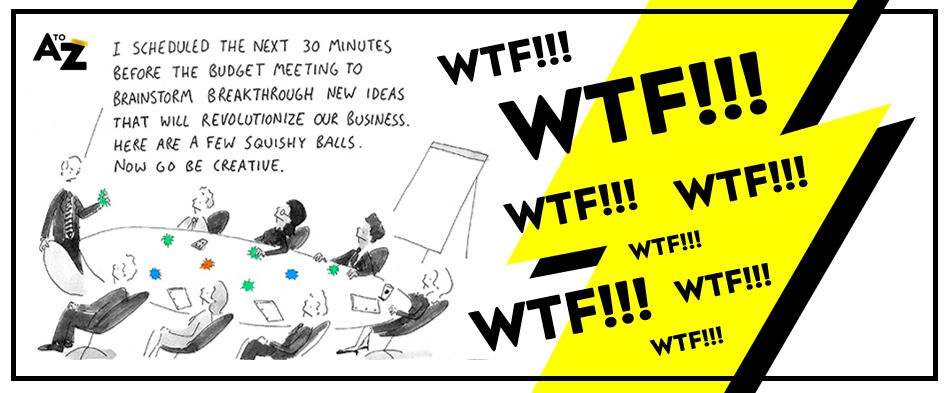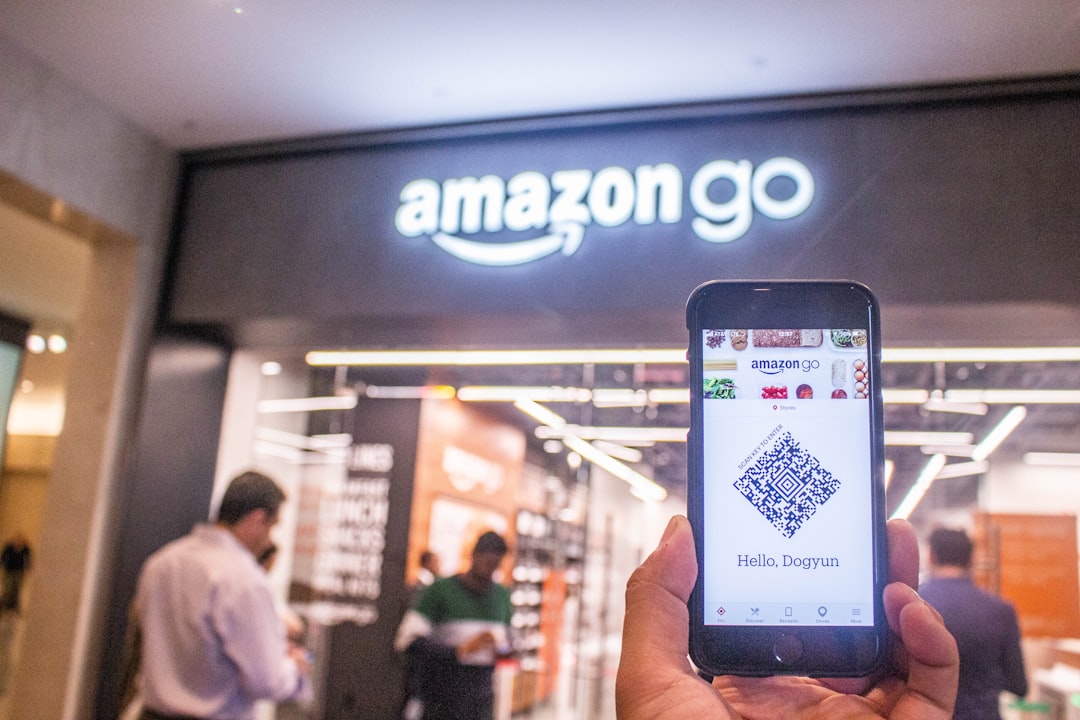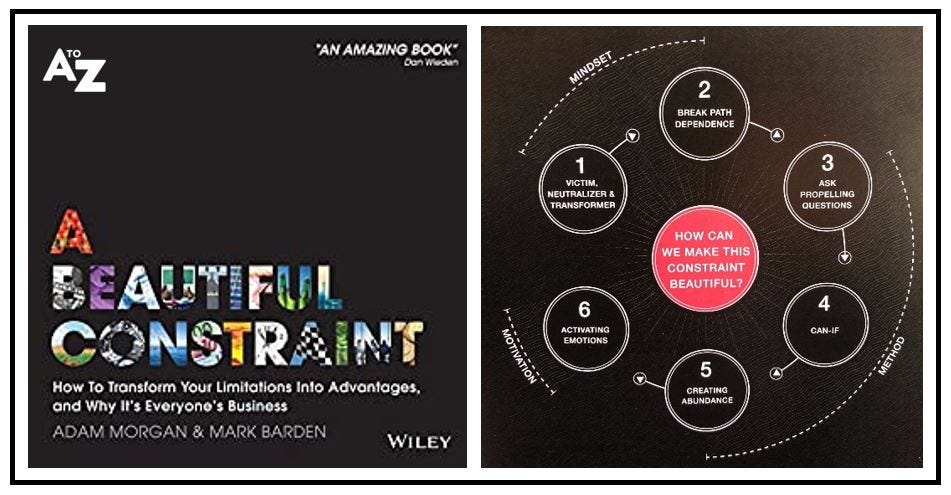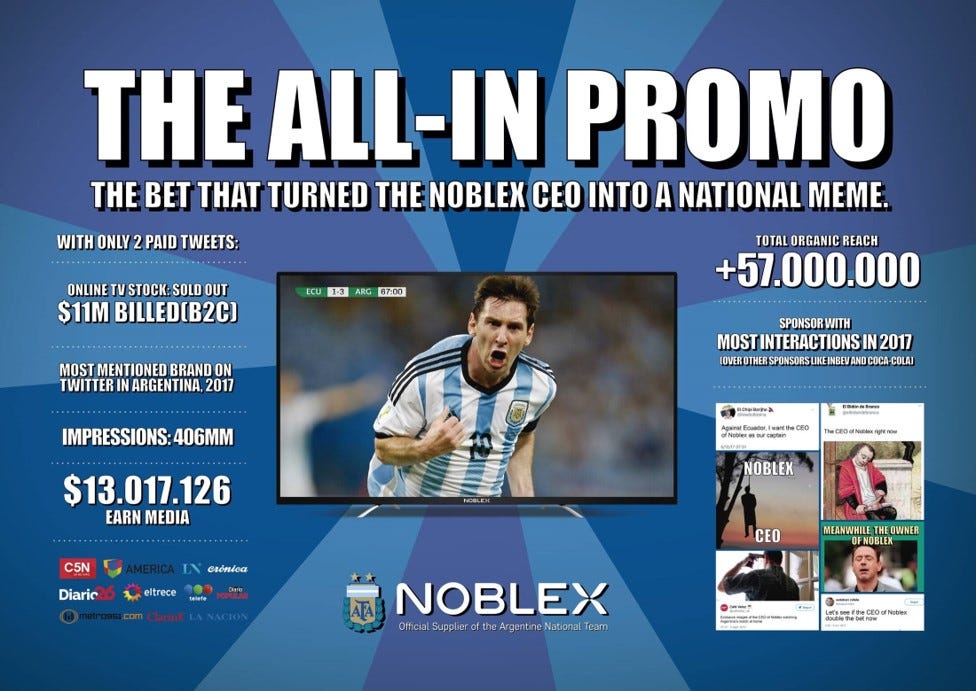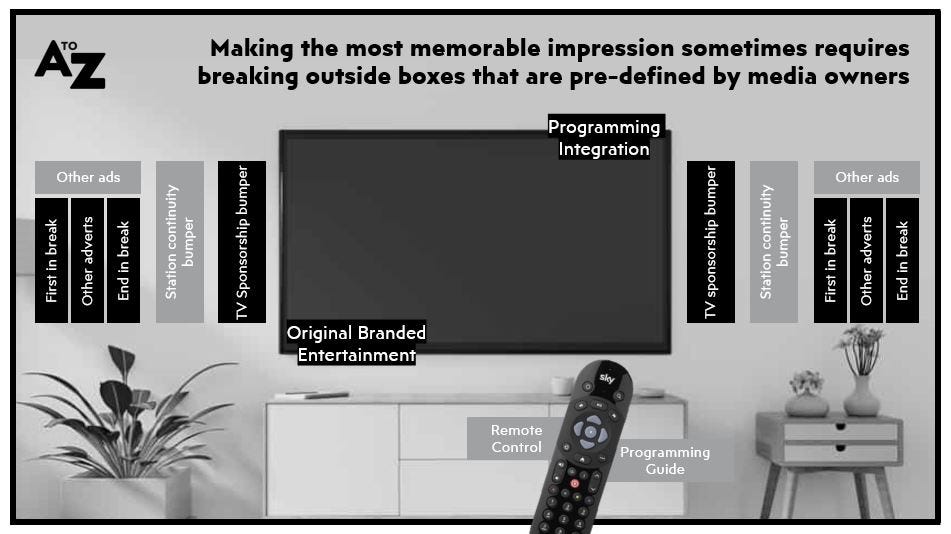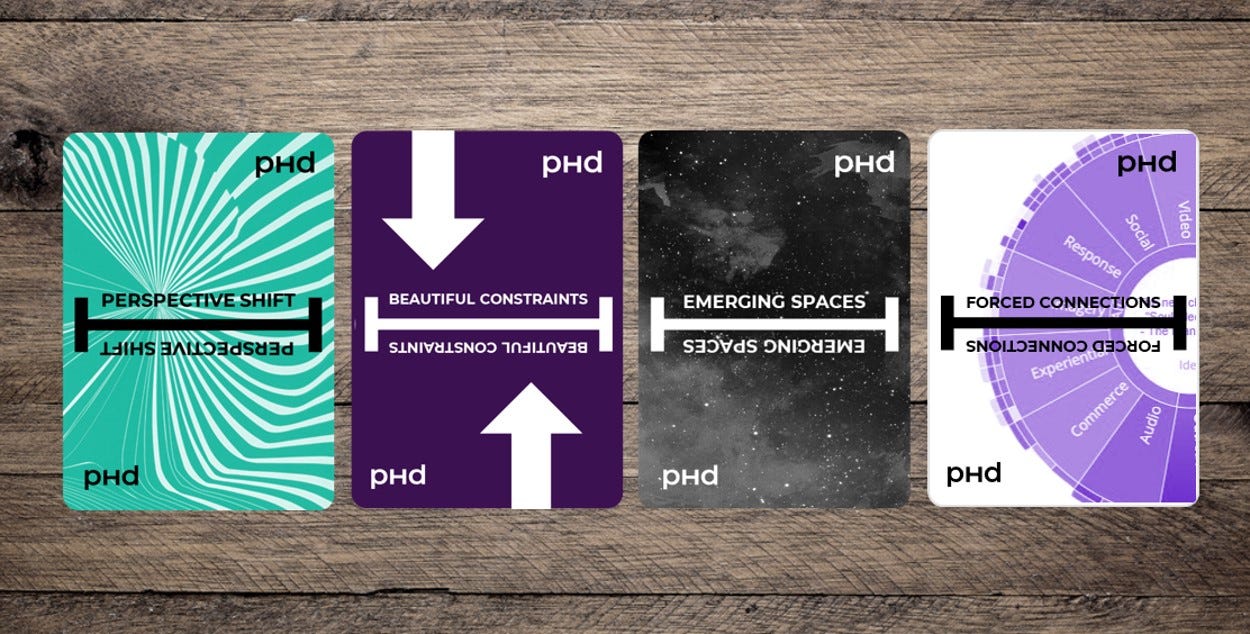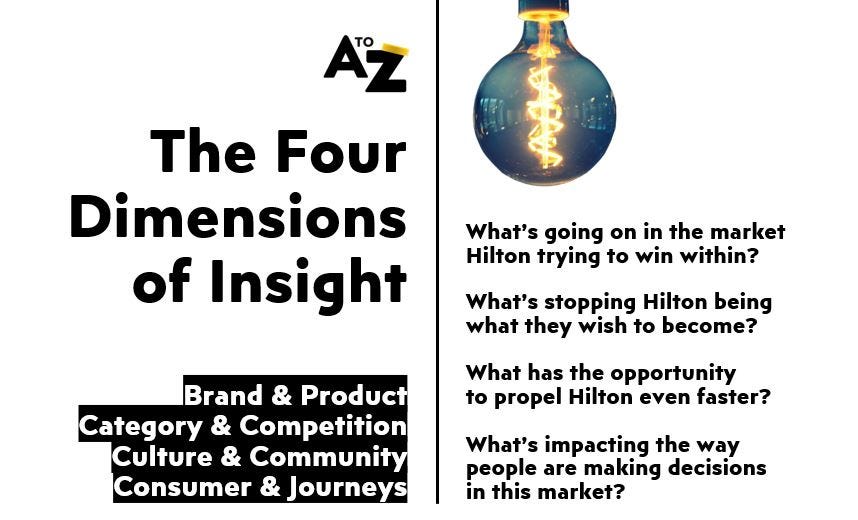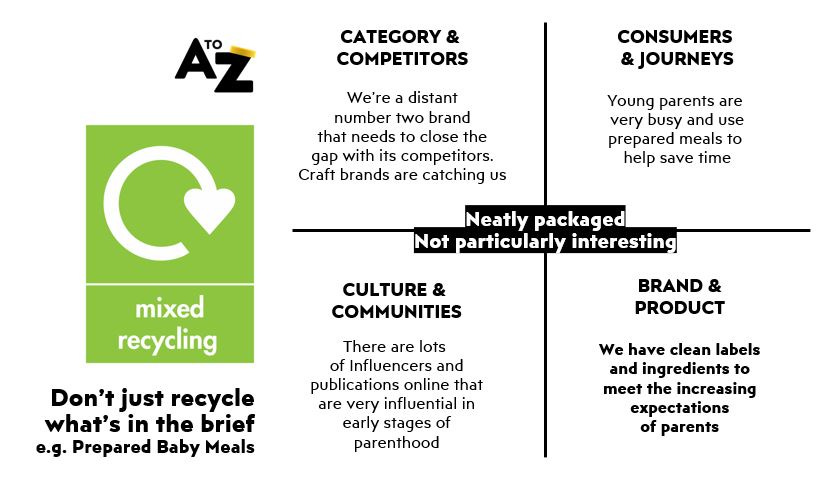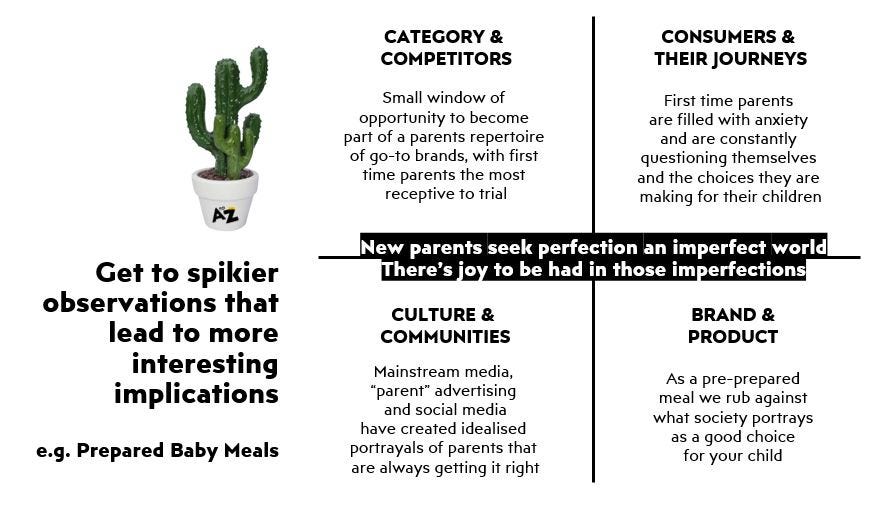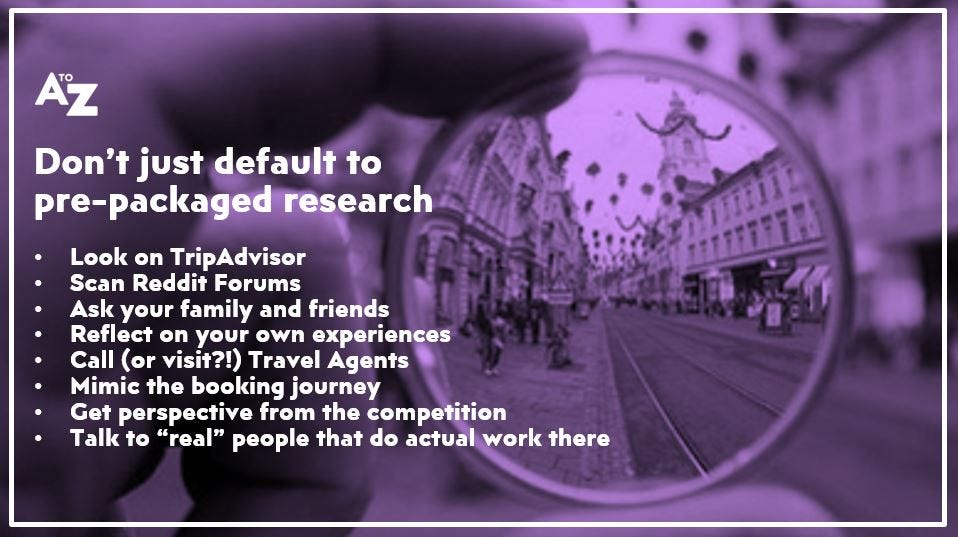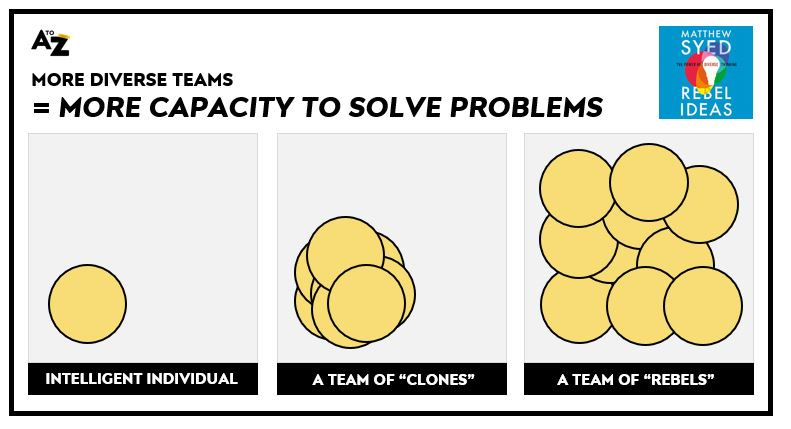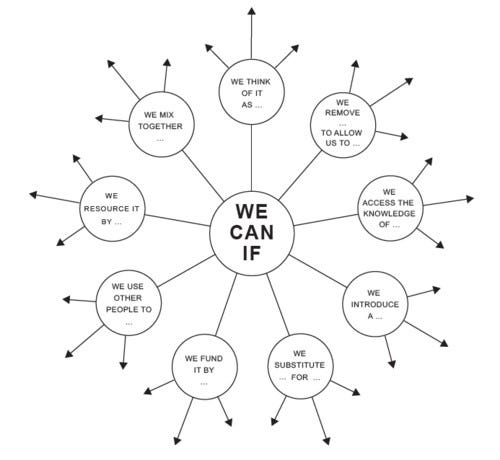L is for...Lateral Thinking, with Less Thinking
Techniques to help you stretch what's possible, further and faster
The volume of evidence around advertising effectiveness that has been created, shared and become common knowledge across the past decade has made it difficult for a media planner who has even skim-read the literature, or googled the summaries to make genuinely “bad” planning choices in 2022.
PLUG: If you wish to do a quick skim read of that very literature, I’ve summarised the things you need to know in E is for…Effectiveness
This knowledge, put into practice, helped stem what was becoming a tide of less effective advertising – as we eventually got to grips with how to use new media channels, made possible because of the internet, to compliment our tried and trusted ones.
Whilst sound choices, solidly evidenced, that de-risk a marketers investment are super important – it’s unlikely that they’ll result a step-change in performance.
Or at least once you’ve eradicated any “bad choices” from your approaches.
As similarish brands, using similarish tactics, within similarish channels, will likely deliver similarish outcomes. Especially if they’re using similarish creative, to promote similarish products and services.
As spoken to so eloquently from different angles by Tom Roach & Jim Carroll and illustrated by the ever on-point Marketoonist.
A step-change in effectiveness of marketing communications requires disproportionate attention…and with that memories made, associations created and actions taken for each $ invested.
One example being Oatly, who have stuck one on big-dairy and in doing so have not only grown faster than their direct competitors, like Alpro, but the dairy industry at large as well.
Not just by being for something, but being against something.
Not just through spraying and praying, far and wide and thinly, but via overcommitting to messages and audiences they see as important to their mission – such as Baristas that can indirectly and associatively win over coffee lovers in areas they were expanding supermarket distribution into.
It’s easy to talk to the characteristics of good work, it’s harder to do it or contribute to it
Types of thinking and subsequent work like that of Oatly is easy enough to point at and say well done, we should do some of that, but how do you actually take your mind to unexpected places and spaces?
Doing so in the often minimal time we’re given, within increasingly sprinty responses-to-brief, response to the re-brief and the revert to the original brief planning cycles.
Taking a creative platform, or a campaign idea and help give it the best chance of doing the job it has been designed to do - which might not involve a typical combination of TV, Paid Social and some industry-facing OOH.
To help you in this quest…
L is for…Lateral Thinking, with Less Thinking
Where I share techniques to help you stretch what's possible on a brand or campaign you might be working on, further and faster.
I start by sharing what lateral thinking isn’t and is, before sharing some methods that have served me well, that you might bring into your own work moving forwards.
Whether you find yourself on your own, needing to run a workshop with colleagues, or helping clients and creative partners flex where they might take an idea beyond a TV script or a mocked-up billboard underneath a railway bridge in East London.
So what is lateral thinking?
To explain what lateral thinking is, it’s easier to start with its logical twin.
Logical thinking is linear by nature.
Similarish problems, encountered regularly, requiring familiar solutions.
For instance…
We need to make some choices about how to invest a media budget next year
The econometric model suggests the optimal channel mix is X, the optimal flighting is Y and the likely results will be Z
Tweaks required owing to external factors such as media inflation, known competitive activities or evolutions in target audience behaviour
Off you pop!
What works is well known, therefore repeat the things that work and optimise the things that have the potential to work harder.
Logical thinking within our discipline of media planning, built from the evidence born from marketing science and effectiveness circles, absolutely raises the floor and helps stop people making really bad choices.
Logical thinking on its own however, can only take you so far up the effectiveness ladder.
Step forward Lateral thinking, first termed by Edward de Bono in the 1960s, who introduced indirect approaches to problem solving as explained on the video (1 of 3 parts) and graphic below.
Indirect methods can be super helpful in getting to expressions of creative platforms or campaign ideas in our world that have a better chance of standing apart, standing out, getting seen, discussed, remembered, recalled and hopefully acted upon more often than they otherwise might.
The following are three ways of working, and ways of thinking about work, I’ve found with a little practice will help you unlock more of the maverick inside, more often.
The first one is long, the second two are short I promise : )
1. Force yourself to start your thinking from a different perspective, place or space - to create “indirect” paths
The below visual is an exaggeration, but I’ve lost count of the numbers of brainstorms, workshops or working sessions that have had a vibe akin to something like this.
A completely open task, so open it ends up paralysing a group, resulting in thoughts that can’t be used or most likely are born from pre-existing conventions as participants scrap around for something that won’t make them feel or look stupid.
To take yours and/or your teams thinking to a more interesting and productive space, force people to start their thinking from a different place, as any ideas triggered will automatically start to break conventions.
I’ve found the following techniques particularly useful.
#1 Perspective Shifts
The simple act of reframing, can bring new meaning from the same information, or new ways to express a creative idea that borrows from out-of-category norms.
A powerful way of creating different perspective, is to pretend to be someone or something else. Then approach the challenge, or opportunity that faces you in the way you imagine they might approach it.
This could be looking outwards at other brands and businesses.
For example, Amazon have shown there is big business, in making their business
a little easier to do business with.
If Amazon were to enter your market what might they seek to reset?
What frictions exist could you try to remove before Jeff does it for you?
What ways could you seek to collapse the funnel across different types of connections between brand, advertising and consumer?
This could be looking towards public figures known for doing things in a particular manner.
For example, Jacinda Arden stands out in politics for being empathetic to the needs of all the people that she serves, not just her political party donors or providers of secondary incomes.
If Jacinda gave up on politics and became the CMO of your brand, how might she use everything in your armoury to level the playing field in your category, in ways that do good for society and the bottom line?
This could be pointing inwards at yours or your client’s organisation.
How might trade-marketing solve this consumer-marketing issue?
How might your head of trading at the media agency, be able to put together a deal that gets you significantly more bang for your buck to solve this strategic challenge?
Channelling someone or something else naturally takes your thoughts to a different starting point, that may take you to a more interesting end-point.
Perspective shifts are useful at any point in the planning process, be that interpreting a challenge at the start, or expressing an idea at the end.
Give it a go and see what happens!
However, make sure you force people to embody someone, or something, rather than letting them choose as it’s by backing people into a corner you’ll unlock yours or your team’s resourcefulness.
#2 Beautiful Constraints
Adam Morgan’s book A Beautiful Constraint is a great read if you’re interested in brands that are challenging the conventions of their category and ways you might do the same.
The premise of the book is how perceived “limitations” in the resources that are available to a brand or business, can actually create the impetus to make bolder, more impactful choices.
But big brands, with big marketing teams, that work with big agency networks like the ones many of us work for or with… can get flabby and in a repetitive rut.
A certain type of objective requires a certain type of campaign, or a certain amount of time to deliver it!
A certain amount of budget means we lead with Media X, Y & Z or we have to disregard that media completely!!
What if you had zero media budget but the same objective? What would you do? How might your actual budget enhance that choice?
On the flip-side what would you do if you had unlimited media budget but you needed to deliver a long-term goal tomorrow? What choices would you make? What shortcuts might you take?
What if regulators removed your ability to use your lead media channel?
These provocations force you to strip away the comfort that comes with convention, to create different starting points, and vastly different end points for how you might go about achieving your desired outcomes.
Like this example of a Television manufacturer in Argentina.
They ran a sales promotion when the Argentinian football team were struggling to qualify for a major tournament; that would refund anybody who bought a TV if Messi & Co. failed to get there.
Each twist and turn, put themselves front and centre within the discussion around the nations obsession, as the pundits kept humourosly referring back to the CEO of Noblex with each stumble Argentina made on their way.
All for the cost of insuring themselves against an outcome (Argentina not qualifying), rather than paying for airtime in peak programming with a more conventional promotion.
Wonderful stuff.
These types of constraints are really helpful when exploring the different ways you might structure or shape a campaign, depending on the nature of a task as you see it - to help a “creative platform” formed in PPT, expressed as a 48 sheet or a TV script, cut-through harder in the real world.
#3 Forced Places & Spaces
The most simple way of thinking laterally about channel choices and creativity within those channels, is to force yourself to think about a specific channel and all that might be possible within it.
Not defaulting to the obvious, but forcing thoughts around specific paths you might take.
Be that emerging spaces that might not be universally adopted yet, but may help you cut-through disproportionately vs. repeating what you did last time out.
Each year the adland trends decks that are released and aggregated online create dozens of thought-starters that can combine a campaign idea with an emerging space, and thinking about it through the lens of nostalgia, or using generative AI, or tapping into circularity.
Or be it specific media channels or formats within them.
For instance within television, don’t just distribute your TV ad in the ad-break, how might you use other people’s adverts, how might you interplay with the sponsorship bumpers or even the TV controller itself to make a more meaningful connection?
A good example of lateral thinking within television would be Brahma Beer in Brazil, who created a D2C platform called “pay-per-beer” that bundled pay-per-view football matches, with crates of beer, delivered to your door, that gave you the match for free.
All at the touch of a red button.
Depending on your client and the category you’re working in, you can add alternatives that might be more specific to the way consumers journey through a category – e.g. the cold aisle at the supermarket, the insurance aggregator online or a gaming keyboard like this KFC example that created a keyboard shortcut to help gamers satisfy their hunger without having to leave the game.
The key is forcing you or your teams to think in a space or place, rather than choosing what’s immediately appealing – thus starting, and more likely to result in, a non-conventional thought of what you might do as a consequence.
A good way of doing this is making it into a card game.
As with card games you’re forced to figure out how to win with the cards you’re dealt with, rather than a mere understanding of what makes a winning hand.
I created dozens of provocations in the form of a deck of cards that PHDers can bring into their work at different points in their strategy and planning workflow.
People feel more psychologically safe to stretch their thoughts when playing a game, as opposed to giving their professional opinions on what might be done.
2. Observations of the real world, can lead to spikier thinking in our world
Recently I was presenting to a group of industry joiners at an IAA conference in Oxford, to aid them with a planning task they were about to kick-off that had been set by the marketing and agency team at Hilton Hotels.
As part of that session I walked through the types of questions I ask myself when working with a new category or client, to figure out what’s going on, and therefore what a brand might need to do to steer a market in their favour.
The simple act of getting closer to what’s going on, can throw up numerous nuggets that might make their way into a response later down the line, or even shift the nature of the response altogether.
Elevating what you might receive within your brief from the client that could potentially be bland and boring and conventional, like this baby food example…
…towards an understanding of what’s going on that is rich with specificity and possibility when it comes to any advertising and communications that might follow.
Getting to the most “real” representation of what’s going on, it sounds quite obvious, requires getting away from our desks.
For the Hilton exercise I urged the delegates, given they were working on a travel brief, to look on TripAdvisor, scan reddit forums, call or even visit travel agents, mimic the booking journey and even ring up competitor hotels to get a rounded sense of how Hilton is perceived and placed in the market – and what might be required to change that.
Each of these interactions opens up your understanding of a market and creates potentially new and novel thought-starters for how you might win within it.
3. Teams of rebels, beat teams of clones
Earlier in my career I was convinced that unless I could crack a whole brief on my own, I was going to be perceived as sucking at my job. Experience taught me that I do a much better job, much faster, when bringing other people into my thoughts sooner, rather than later.
I might still suck but at least I’m more productive.
Mathew Syed talks to our mental capacity to solve problems in his book Rebel Ideas, The Power of Diverse Thinking.
An intelligent individual’s experience of the world and expertise in their role being represented by the size of the circle; knowing only so much, means someone can only really solve problems within a range of familiarity i.e. the grey area.
If a problem exists outside of someone’s immediate domain, they may absolutely get to a solution, but it will likely take them much more time as they research it and figure out what’s required.
Hence why working in teams is really important and Mathew talks to two types of teams.
Teams of clones are more useful than they sound.
Similar people, with similar qualifications and experience, brought together in teams to get s*** done.
Teams like this are really important in certain contexts… when the nature of the challenge is logical, and an experience of similarish tasks can be put to good use.
A factory would be a good example of this.
Making the same things over and over again, to an agreed standard, with limited factors that can go wrong, that if they do go wrong likely have gone wrong before.
In our world this might be a team of digital marketing specialists setting-up a martech stack for a client or adapting it for a campaign, or the planning by numbers scenario I referenced earlier to illustrate logical thought-processes.
Whilst teams of clones are useful, Teams of Rebels can help you get further, faster.
Illustrated in the book by Bletchley Park’s code-breakers of the second world war.
Bletchley Park understood that a team of Alan Turing’s would have been individually brilliant, but they wouldn’t have the diversity of thought to solve a multi-dimensional challenge like cracking the Enigma code.
So they actively recruited women, making up over half the team vs. less than 10% of the professional workforce at the time, as well as brilliant cultural historians, linguists and ethnographers who were fluent in maths but practiced in other areas.
They even recruited through newspaper crossword puzzles to maximise their talent pool of talented codebreakers beyond those introduced via academia.
A team engineered to maximise their collective ingenuity.
In our world collective ingenuity can be harnessed by bringing together a x-disciplinary group when the brief comes in, to talk through it and get different people’s interpretations of the brief and their instincts as to how they might respond before it’s had the chance to conform to the “strategy-leads” view of the brief.
Or it might be as simple as walking round the block to talk your thinking through with someone who works on another team, at different points in the development of a plan.
The more people you open up to, the more likelihood you can take your work to an unexpected and potentially more interesting space, with more conviction as each discussion helps you better stitch together what you wish to do and why.
This also talks to the importance of refreshing teams over time.
Whilst experience of a client and how it works can be beneficial, over time a team of rebels will start to slowly resemble clones as they inevitably fall in-line with what works and what gets signed off by certain clients.
Don’t be afraid to mix things up.
One last thing…making “thoughts” into “things” requires a “can-if” attitude
It’s all well and good having interesting thoughts, but unless those thoughts make their way from a wall, into PPT, onto a plan and into the real world they’re ultimately futile.
The thing is with trying to do things that break with conventions or commonly accepted practices client-side, is that there is often a muscle memory that’s triggered, even upon the merest suggestion of something, that says “we can’t do that here”.
I’ve said those words before, I’ve heard them many more times.
Adam Morgan offers up a useful re-framing of that statement to diffuse the disbelievers and give your best thoughts the best chance of making it out into the real world.
Replace the phrase “we can’t do that” with “we can if” and you’ll be amazed a how the disbelievers soon seem to disappear like the homer in the hedge meme.
I hope you’ve found something of interest or of use.
Until next time : )


